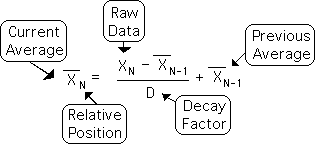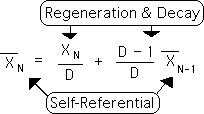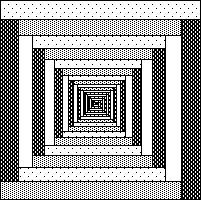The Urge to Symbolize Experience through Mathematics
Humans symbolize experience to further Self-actualization process.
As living beings, we share the common desire to actualize our potentials – to be the best we can be – enjoy life to the fullest. To that end we humans continually symbolize experience in order to organize our lives. This organization facilitates a deeper understanding of the factors that it will take to realize our common goal – self-actualization.
Language, a more precise method of symbolic representation
We symbolize our lives in many ways, music, theatre, literature, the visual arts, and most common of all, conversation. Indeed some scientists speculate that our urge to symbolize experience led to the development of language. The assignment of an endless variety of little sounds to an equally endless array of mental constructs is an amazing technology for organizing our world. These words, the atoms of language, enable us to make ever-increasingly precise statements regarding the nature of reality.
Numerical relationships of mathematics provide greater symbolic precision
Yet the precision of these verbal statements is somewhat impaired due to multiple connotations associated with these little sounds called words. To counter this inherent ambiguity, humans, ingenious species that we are, developed an even more precise technology for refining the nature for existence – mathematics. Instead of characterizing the nature of experience with ambiguous words, humans began to symbolize their world with unambiguous numbers.
Pythagoras (570-500BC?): Mathematics and musical harmony
The Greek Pythagoras (570-500BC?) is generally considered the father of mathematics. He noticed a pattern of correspondence between music and numbers, which is at the root of harmonic relationships in every culture. Due in large part to this insight, he then proclaimed, in effect, that Number determines the order of the Universe. He even applied his musical insight to the heavenly bodies circling the earth – the root of the ‘music of the spheres’. His insights were carried on and developed by his school – the Pythagoreans.
Algebra, the written language of mathematics
These early mathematicians had a major liability. They were forced to discuss these numerical relations with words. A millennia and a half after Pythagoras first introduced mathematics, the Arabs provided the world with a solution to this problem – algebra. This enabled mathematicians to express numerical relationships with symbols of even greater abstraction. The power in these abstract symbols lay in their ability to generalize results across a large swatch of numbers. Now the written language of mathematics was mathematical symbols rather than verbal letters. Algebra provided mathematics with a language written in its own terms. It could even be argued that the importance of this powerful cultural technology is on a par with the technology of language.
Modern Mathematics and algebra synonymous
Because of the power of algebra in communicating mathematical ideas, algebra and mathematics are considered to be synonymous in the modern context. Indeed those that employ these little symbols can only with great difficulty, if at all, translate their abstract concepts into words.
Precisely defined algebraic symbols organized into expressions, equations, and proofs
Accordingly, modern mathematics consists of manipulations of precisely defined symbols that have no connotations. These mathematical symbols consist of a single mark, not a collection of letters. These curious little marks are further organized into expressions. These algebraic expressions signify abstract objects and process, the nouns and verbs of mathematics. These expressions are further organized into equations, the sentences of mathematics. Equations serve 2 basic functions. They can be employed as a formula to calculate relevant values, or these equations can be organized into proofs, the paragraphs of mathematics.
Article’s intent to explore the Living Algorithm’s algebraic symbols
The Living Algorithm is a formula that calculates values that characterize the ongoing moments in a data stream. The intent of this article is to explore the algebraic symbols of the Living Algorithm. This exploration is a verbalization of the mathematical elements and relationships. As such, there will be no proofs and no computations.
The Living Algorithm's Symbolic Form – her Algebraic Elements
The Living Algorithm’s sole function is digesting data streams. The digestion process produces the rates of change (the derivatives) of any data stream. In this manner, the Living Algorithm reveals the trajectories of each individual moment. This method of digesting data streams generates an entire mathematical system – Information Dynamics. Further, the Living Algorithm’s mathematical system seems to behave in a similar fashion to living systems. But our present focus is not what she does, but who she is. This is revealed through her equation, which is her. Although her manifestations are so complex that they defy description, she is elegant in her sheer simplicity. Check her out.

Elements of the Living Algorithm
Let us first name the symbolic elements in the Living Algorithm:
- The X without a hat, [XN] is a particular point in the data stream.
- The Xs with hats [
 ] are Living Averages. (One is the past average and the other is the current average.)
] are Living Averages. (One is the past average and the other is the current average.) - D, the Decay Factor, is the rate of decay – the only constant in the equation.
- N represents the relative position of the Data or the Living Average in the Data Stream.
(Example: X10 represents the 10th data point, while
 represents the 10th decaying average in the stream.)
represents the 10th decaying average in the stream.)

A Verbal Description of the Living Algorithm
The Living Algorithm’s algorithm (procedure) determines the current Living Average [![]() ] in three simple steps.
] in three simple steps.
• 1) Determine the difference between the most recent data point [XN] and the existing Living Average [ ]. This number represents the rate of change (indicated by the triangle) between the past and the present.
]. This number represents the rate of change (indicated by the triangle) between the past and the present.

• 2) Scale down this difference (the rate of change) proportionately.

• 3) Add or subtract the scaled difference (rate of change) to the existing Living Average [ ]. We add if the data point is larger than the existing Living Average; and we subtract if the data point is smaller than the Living Average. In other words, we add if the change is positive, and subtract if the change is negative.
]. We add if the data point is larger than the existing Living Average; and we subtract if the data point is smaller than the Living Average. In other words, we add if the change is positive, and subtract if the change is negative.
The new, now current, Living Average [![]() ] is the result of this procedure.
The Living Average is similar to a traditional mean average, except that it is ongoing and evolving. The operations of the Living Algorithm are straightforward math. Due to this computational simplicity, the Living Algorithm is very pragmatic. As such, it could be a useful tool for both humans and living systems.
] is the result of this procedure.
The Living Average is similar to a traditional mean average, except that it is ongoing and evolving. The operations of the Living Algorithm are straightforward math. Due to this computational simplicity, the Living Algorithm is very pragmatic. As such, it could be a useful tool for both humans and living systems.
Living Algorithm & Life: self-referential & regenerative
It might seem as if this Living Algorithm is just a fancy average. What makes her special?
The Living Algorithm digests a stream of data to determine an ongoing average that is constantly updated in response to incoming data. This fluidity demands a continuous stream of computations, not just one. Further, this ongoing average characterizes each data point in relation to the preceding data points - which are weighted on a sliding scale from the present moment. In contrast, the traditional mean average characterizes the general features of a fixed data set and is determined by a single computation that weights each set member equally.
Although small and simple, the Living Algorithm has some distinct features that make her unique. For instance she is both regenerative and self-referential.

In mathematical terms, the Present is a function of both the Past Average and the new Data. The Living Algorithm combines ongoing Raw Data with the Past Average to create the Present Average. Accordingly, this computation must be performed each time there is another input of data. This referencing of the past to generate the present is what makes the equation self-referential. The fact that new Raw Data is continually refreshing the system is what makes the equation regenerative.

Living Systems go through a similar process
In similar fashion our notion of the present constantly changes as we move through space and time. As living systems, we too must continually blend the past with the present input. This is necessary to adjust to the context of dynamic circumstances. In metaphorical terms, our current self is a function of our past self and the current environmental input. As we all know, this process is dynamic, constantly changing and ultimately transformational.
Spiral decay of digitized data
Due to the self-referential nature of the Living Algorithm, the information must come in discrete chunks. As such, her nature is necessarily digitized (quantized). Further, once the Data is digested, it decays in the spiral fashion shown at right.
Looks cool, but what does it mean?
For mathematical reasons, each rectangle from larger to smaller also represents the fading potential impact of the past upon the present. In other words, the impact of past events upon the present fades in spiral fashion with respect to time. This corresponds with experience. Does this indicate an intimate connection between mathematical and experiential realities? We're not clear about the overall implications, but the ordered pattern that emerges in this picture is certainly an intriguing indication of the organic nature of the Living Algorithm's method of information processing – an indication of the elegant simplicity of her process.
Nested Nature of Self-Referential Equations yields Complexity
Part of the complexity of this simple equation comes from the nested nature of the function. The past, also, is a result of its past – ad infinitum. Does this sound like Life? New environmental input continually transforms our old self into our new self, with traces of the distant past still continuing to influence our behavior. Nothing is lost. It just fades. How different than the material building blocks of the Universe (electrons, atoms, quarks and muons) with their invariable nature - unchanged by anything but the cataclysmic - 600 million dollar particle accelerators that occupy square miles of territory and require extreme temperatures.

Living Algorithm & Life self-referential
It's evident that the Living Algorithm has much in common with Life. The Living Algorithm's Family is a set of self-referential, regenerative equations. Life certainly has these features. Living systems, by necessity, are in a contextual, self-referential, give-and-take relationship with the external world. In fact, the very survival of any organism is based upon a contextual response to a dynamic, changing environment. For example, to avoid colliding with unforeseen obstacles, we need to pay attention to the road conditions while driving a car. The fact that animals are constantly monitoring and adjusting to maintain balance and refresh the senses is an instance of self-referencing. Bronowski among others claims that our human ability to reflect upon our own consciousness is what makes us unique in the animal kingdom. He goes on to develop the notion that this self-referential feature of the human mind is an essential factor in the origination of the individual words that are at the foundation of speech.
"Self-reference, like self consciousness, is in fact the glory of the human mind. It is the special way in which our language works." (The Origins of Knowledge and Imagination, p. 98)
Living Algorithm & Life regenerative
In addition to being self-referential Life is, by necessity, in a continual state of regeneration. Koestler affirms this notion more emphatically.
“Regeneration has been described as ‘one of the more spectacular pieces of magic in the repertoire of living organisms’. That may be the reason why it is so difficult to find a satisfactory definition which would embrace the whole range of phenomena to which the term is applied.” (Act of Creation, p. 450)
On the most basic levels ‘physiological regeneration’ includes ‘the repair of damaged bone, muscles, skin, and peripheral nerves’, as well as ‘the routine replacement of tissues used up by ordinary wear and tear’, such as the skin. Because of their many similarities, the Living Algorithm System is the ideal method for the study of living systems.
Links between the Living Algorithm and the Cell
Why is she deemed the Living Algorithm? What features could this mathematical equation possibly share in common with a biological cell?
Both Digest Data
The cell is a useful metaphor for understanding the mathematics of this equation. For instance, a cell processes environmental information and turns it into a usable form for the organism. A cell, as an organism, exists in a time continuum. As such it’s important to note that the processing of information is ongoing. Our equation borrows the name, Cell, in that she, too, processes information in an ongoing manner and turns it into a more useable form. As a cell is a biological factory, the Living Algorithm is a mathematical factory. Both digest information, whether biochemical or mathematical, transforming it into a form that can be utilized. Hence, the name Living Algorithm.
Potential connection to Living Systems
In addition to the metaphorical power of the Living Algorithm, we argue elsewhere that the Cell and the Living Algorithm share other features as well. For instance, living systems, as information processors, may actually employ the mechanisms of the Living Algorithm, or something like it, to digest quantifiable environmental input, transforming it into a form that the Body/Mind can use. As well as effectively modeling reality, the mathematics of the Living Algorithm may very well be the language of the cell itself – the language of reality.
Potential Evolutionary connection
In addition to the Living Algorithm’s symbolic ability to model reality and pragmatic ability to digest numerical (quantifiable) reality, we also maintain that these mathematical mechanisms might have played a significant role in the evolution of Life - as did cells. The Living Algorithm is an extremely efficient, if not the most efficient, way of processing contextual, regenerative information. As such, we argue that Life, in its perpetual quest for efficiency, has actually evolved systems to take advantage of the properties of the Living Algorithm. (See Evolutionary Potentials.) For example, the mechanism our biological system (the C and S processes) employs to force us to sleep mimics the mathematical model behind the Triple Pulse. (See Triple Pulse & Sleep Necessity for more.)
Conclusions
The Living Algorithm is the foundational algorithm of Information Dynamics. The Living Algorithm and Life are both self-referential and regenerative. As such, the Living Algorithm is the ideal type of algorithm to model the features of living systems that are also self-referential and regenerative. We deemed her the Living Algorithm because of her many similarities, perhaps even an intimate relationship, with the biological cell. Check out the next article in the series to meet the Living Algorithm's Family.
If you are interested in Living Algorithm's personal history – her developement as an independent entity, check out Simple Beginning & Collaborative Flowering.
If you are ready for a break from all this serious analysis, check out our allegory world and see why Life is ready to meet Cell’s Extended Family.
